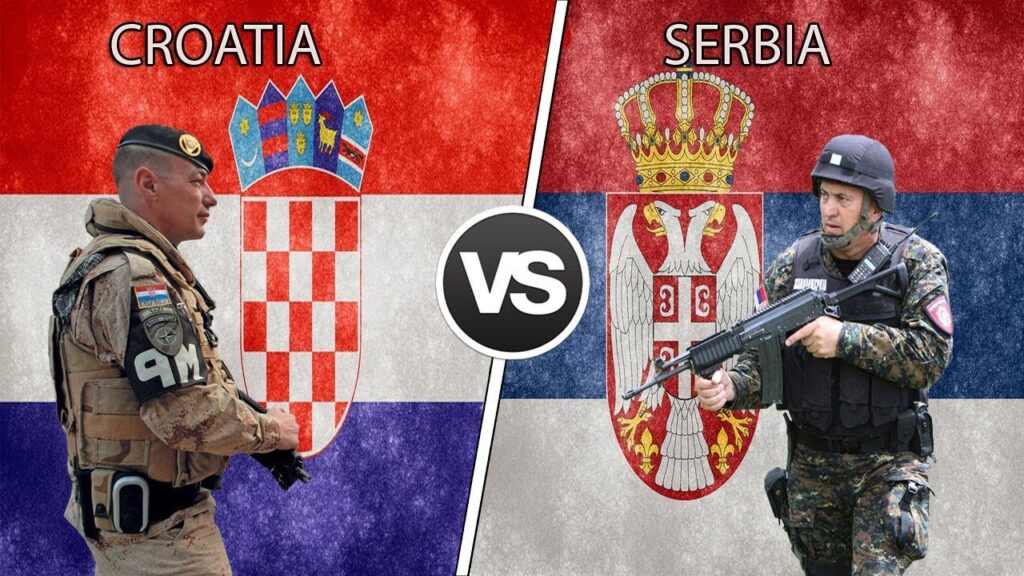Conflicts abound in Europe, and now Serbia and Croatia seem to take the stage in a very worrying manner: two European countries are getting ready for war. Both countries, nearly traumatized by their pasts, work on military capabilities and suggest some kind of conflict looming in that region. But why do these two neighbors prepare for possible military engagement, and what does this mean to Europe?
Historical Context of Serbia and Croatia’s Relations
The current tension can be only understood while gazing back to the demise of Yugoslavia in the 1990s, which was followed by these deep divergencies between Serbia and Croatia. Those two nations fought embattled during the Yugoslav Wars, and although peace agreements were signed, the scars of the conflict remain. Unresolved issues that continued to simmer under the surface included territorial disputes and ethnic tensions.
The tensions today are also largely influenced by the overall geopolitical climate in Europe. The fight for power between NATO and Russia has heightened the stakes and is now getting more prominent in the strategic interest over East Europe. Serbia is diplomatically close to Russia, while Croatia is a country that is part of the European Union and NATO. It has become something of a dichotomy between the two nations.
Major Events That Caused the Latest Skirmishes
Political Rows and Territorial Disputes
For the last years or so, political tensions have been increasing between Serbia and Croatia. Serbia tends to hold Croatia responsible for meddling with Serbia’s internal affairs, an aspect that may involve numerous matters, from the rights of national minorities to revived historical grievances. Croatia is more direct with Serbia when it comes to its revisionist history and belligerent nationalism in dealing with the ethnic Serb minority.
Role of NATO within the region
The expansion of NATO into the Balkans has also been a source of contention. Full NATO membership for Croatia has shifted the balance of military power to the advantage of those opposed to Serbia and, thus, resulted in an insecure feeling within Serbia since the alliance is perceived as a threat to it. Serbia’s reluctance to join NATO and its strategic partnerships with Russia and China have complicated the equation by further deepening mistrust between the two countries.
Serbia and Croatia’s Military Strategies
Serbia and Croatia have each spent the last decade increasing the military budget. Serbia has purchased advanced military arms from Russia, for example, fighter jets and missile defense systems. Croatia, on the other hand, has fortified its weapons stockpile through deals with the US and other NATO allies. Both scenarios in question can be described as armament rather than posturing; indeed, this is a clear indicator that these countries are preparing themselves for the possibility of armed conflict.
Both have been having extensive military drills apart from the arm build-up. Serbia and Belarus have had combined exercises; Russia has had combined exercises with Serbia and this is proof of the military might of Serbia. On the other side, Croatia has also had combinational drills with the forces of NATO; this is in a position to deter any form of aggression to its territory. All these activities cemented more suspicion and heightened tension between the two nations.
Economic Impact of War Preparations
Defense Spending and Budget Allocation
All these preparations that go into a war have costs. Serbia is diverting massive resources towards bolstering its defenses, while Croatia has drastically risen its defense budget in laying extra emphasis on the military over the domestic needs of infrastructure and healthcare. Croatia’s onslaught into military funding brought forth much debate on the nation’s priorities. The economic strain feels very heavy in both of these countries.
Civilian Reactions and Fears of War
The realization that a fight may soon set off between the two countries has only caused civilians to raise their voices. Public sentiment is divided in Serbia and Croatia, many people waiting for their governments’ desire for military preparedness to drag them into the war they do not want. Protests were held in both states asking for diplomacy over war, but the drumbeats of war increase day by day.
The Role of Neighboring Countries and Global Powers
EU’s Diplomatic Efforts to Ease Tensions
Preferring to not have another war break out in its backyard, the European Union has made several efforts to intervene in the matter. EU diplomats had several high-level rounds of negotiations with Serbian and Croatian leaders, appealing to the two nations to peacefully resolve their differences. Diplomacy has kept the hawks’ pecking momentarily at bay; however, the underlying issues continue to drag.
Russia and the US: Their Influence in the Region
Moreover, there existed two other very influential world powers with stakes in the Balkans. Both these have played pivotal roles. Russia has remained Serbia’s ally both militarily and politically. The US had committed its support to Croatia through its allegiance to the NATO structure. Such a power game by the world super powers worsens the scenario since each of them continues with their agendas in this region.
Can War Be Prevented? Future Outlook for Serbia and Croatia
The question still is: can war between Serbia and Croatia still be avoided? Although both countries are fervently getting ready for war, neither country has laid down arms entirely. Diplomatic efforts are made, so perhaps cooler heads will ultimately prevail. That’s aside from rising nationalism and militarism in the region, however international alliances will not make this road to peace easy. The future of Serbia and Croatia-and therefore the entire Balkan region-remains in an uncertain balance.


